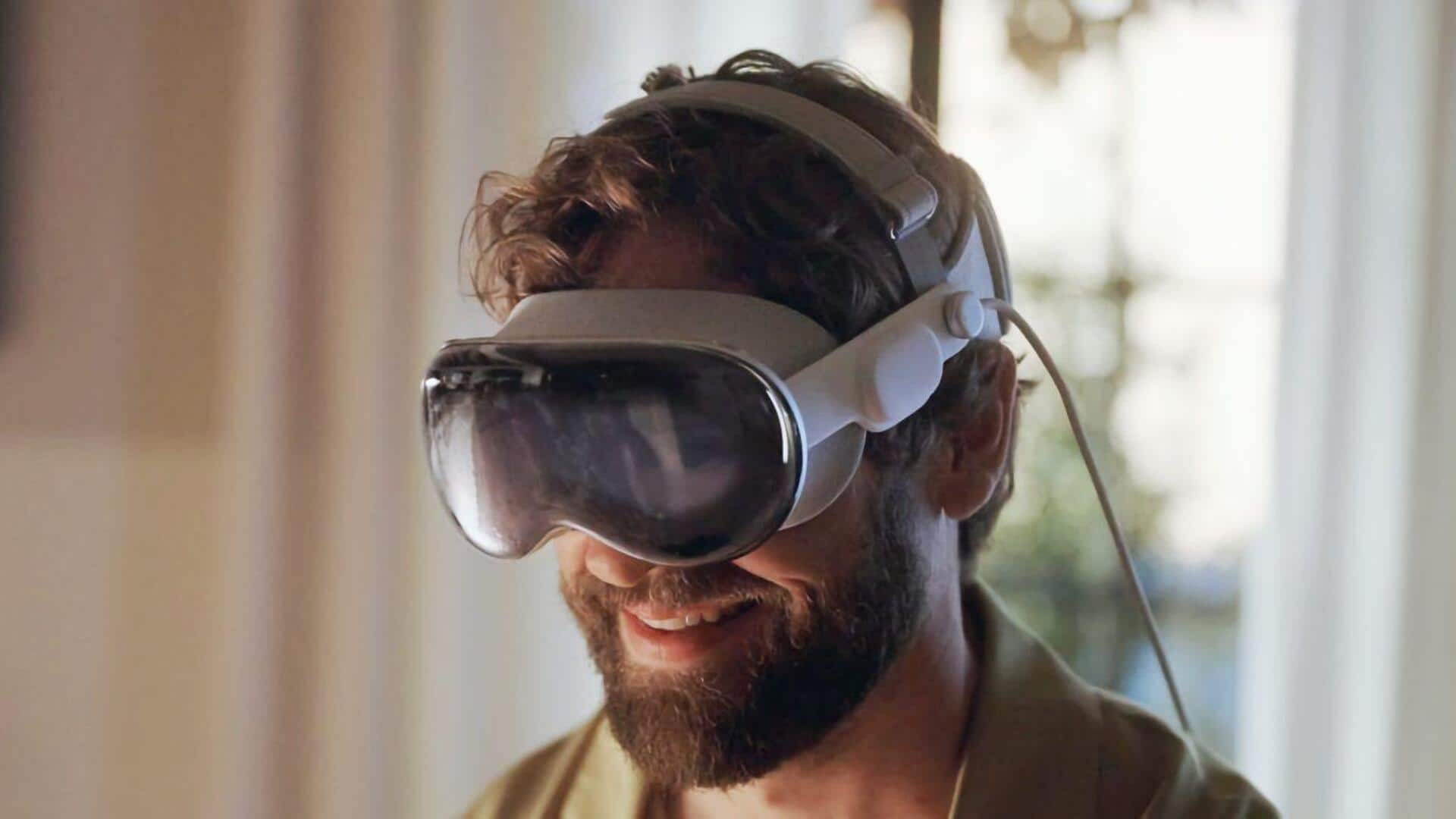
Apple Vision Pro 2 leak unveils design changes, improvements
What's the story
Apple's second-generation AR/VR headset, internally referred to as Project Alaska and identified by the device code N109, has been shrouded in intrigue since the first-generation Vision Pro's unveiling at WWDC 2023. Now, the latest details acquired by MacRumors have revealed the design and hardware of this much-anticipated device, slated for product validation testing (PVT) in 2025 and a potential launch in late 2025 or early 2026. Here's what we know about the upcoming AR/VR headset.
Details
Design include different speaker placement, rear straps
The second-generation Vision Pro headset is rumored to resemble its forerunner, retaining its curved design and button arrangement. Nonetheless, preliminary sketches suggested alterations in speaker positioning and rear strap configuration. The new headset showcases flat sides without the rounded sections for speakers, implying a potential external audio add-on. The redesigned rear straps resemble those on laptop bags or backpacks, which could simplify mass production and possibly reduce the overall cost for buyers.
More
Apple might consider external battery pack, audio accessory
Insiders indicated that Apple might also be considering an external battery pack for the next-generation Vision Pro, akin to the one employed in its initial version. Furthermore, documents associated with Project Alaska reportedly mentioned an unspecified audio accessory, potentially an external speaker. This lends credence to the notion of modified speaker placement in the updated headset design. However, it is crucial to remember that these plans might change before mass production commences.
Insights
Look at expected hardware components
The forthcoming Vision Pro is expected to retain a similar array of cameras and sensors as its predecessors, such as a compass, ambient light sensor, magnetometer, and gyroscope. Connectivity options might encompass Wi-Fi, Bluetooth 5, and ultra-low latency audio (ULLA). Essential hardware components comprise two micro-OLED displays, one TrueDepth camera, four computer vision (CV) cameras, two RGB cameras, two low light infrared illuminators, and a semi-automatic interpupillary distance (IPD) adjustment.